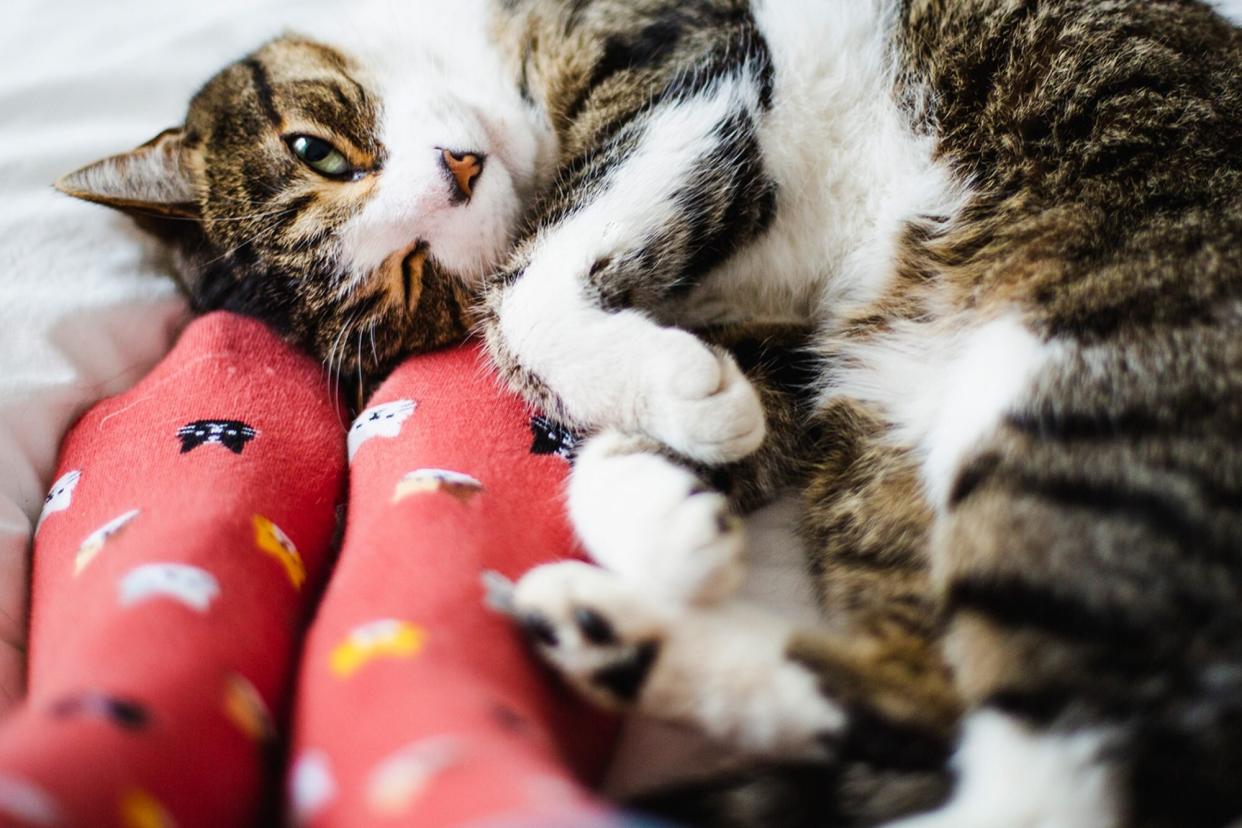Do Cats Have Knees?

Linda Raymond / Getty
Ah, the eternal debate: do cats have knees, or do they have elbows? While there are many things we may never understand about the mysterious floof on your lap, this is one debate we had to pounce on. With a little elbow grease and the help of a feline physical therapist, we got right down to it. So, do cats have knees?
Do Cats Have Knees? Or Do Cats Have Elbows?
Cats are quadrupeds, meaning they walk on all four legs. If they walk on all four legs, this clearly must mean they have four knees, right?
According to the nitty-gritty science, below all that floof are two different types of joints. The front legs are equipped with hinge-like joints and the back legs have, well, a different type of joint equipped with a patella or knee cap. Get where I'm going here?
If you say your cat has elbows and your friend says his cat has knees, well, you're both right! Cats have elbows in their front legs and knees in their back legs.
Do Cat Knees Differ From Human Knees?
Yes, and no, says Natasha Bui, PT, DPT, CCRT, owner of Amicus Rehab. Beyond kitties walking on four legs and us on two, cat knees are pretty similar to human knees, Bui explains. The one key difference: the angle between the kitty's knee and her hips. This angle varies not only between cats and humans, but between different breeds of cats. This angle between knee and hip is more steep in breeds like a Maine coon, contributing to their increased risk of orthopedic issues.
What About Dog Knees?
Yep, dogs have knees too! "Although cats and dogs have pretty much the same anatomy, cats have evolved to have much better dynamic stability and several different traits that set them apart from canines," Bui explains. One example of this impressive evolution is the ability for cats to (almost) always land safely on their feet.
RELATED: Do Cats Really Have Nine Lives?
3 Ways to Keep Your Cat's Knees Healthy
Even the most agile of felines can experience joint and mobility issues. Whether due to age, injury, or excess weight, cats as young as six months old can experience joint pain and even osteoarthrosis. Not to worry, there is plenty that cat parents can do to keep your feisty feline spry, Bui says.
1. Keep your cat active.
A couch potato cat is more likely to develop knee and joint pain than an active cat. To keep your furry BFF on the move, look for interactive toys, furniture, or make your own DIY interactive play, Bui suggests. "Make up an obstacle course in your living room with throw pillows, blankets, and tunnels, hang up shelves on the wall for them to jump on, or get a decked-out cat tree. Cats need to be both physically engaged and mentally stimulated in order to keep them healthy, happy cats."
2. Manage your cat's weight.
Keeping your cat at her ideal weight from a young age is important for a long and healthy life. Excess weight puts more pressure on joints, increasing the likelihood of developing arthritis. The ideal weight for cats varies by gender, age, and breed, so talk to your veterinarian about the ideal weight and diet for your favorite feline. Don't forget that staying active plays an important part in healthy weight management!
RELATED: Best Cat Food for Weight Loss
3. Make home modifications if necessary.
If your feline BFF is a senior kitty who is experiencing a loss of flexibility and mobility, modifying your home just for her will go a long way, Bui says. "Cats will slowly begin to lose their flexibility and overall mobility and will have a harder time doing the most basic of tasks, such as jumping up onto the bed to snuggle or getting into and out of the litter box," Bui says. "To improve quality of life and independence while protecting her joints from degeneration, using adaptive equipment such as steps or ramps can make a huge difference."

